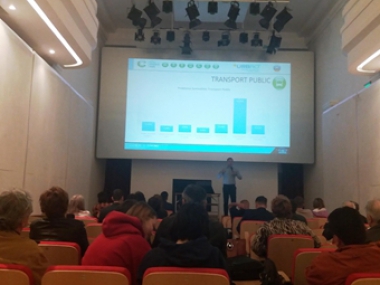Data assessment for a sound SUMP development basis in Slatina
Edited on
02 May 2017In Slatina, data retrieval activities build the basis of the Sustainable Urban Mobility Plan (SUMP) development. Understanding the overall situation at the starting point of the plan is of high importance because it can yield resolutions and measures of increasing mobility. This is aimed to be achieved through data analysis and meetings with the URBACT Local Group (ULG).

The correct identification of mobility data is important in achieving short- and long-term results for the SUMP. With this in mind, corresponding studies were identified in Slatina and the outcome are further analyzed. Part of it were resident interviews at their homes, surveying public transport usage as well as traffic flow analysis to produce an Origin-Destination Matrix – where do people start or enter the city and where do they go to. The traffic flow analysis activities were performed at main city access points and with the collaboration of local and road police crews, in order to ensure the safety and traffic flow. The procedure involved the continuous survey of vehicles from all categories, over two working days and one weekend day, at rush hours in the morning and in the afternoon. An additional activity to this is the recording of traffic flow at main city access points, parked vehicles data as well as traffic counts at established points within the city and in the peri-urban areas. Traffic flux and vehicle categories data was collected through traffic surveillance and surveys (filling-in specific forms including conversion tables to standard vehicles). Recording of parked vehicles included both, legally and illegally parked ones.
The retrieved data helps to identify trends and expectations among transport users and gives valuable insight into the nature of mobility – journeys, origins and destinations. Moreover, this allows a better understanding of traffic components, including both passenger and cargo transport and other mobility types.
Data assessment was rounded up by ULG meetings supporting the identification of the current situation. The access to these specific events was facilitated through direct invitations, social media and press announcements and was open to all citizens of Slatina. The subjects approached during the meetings include: quality of life, social accessibility, traffic safety, passenger/cargo transport, emergency services access, functional zones (populated areas limiting Slatina) and local development policies. A specific meeting was held to present the outcome of the analysis and to discuss their significance for the urban mobility development in Slatina. A novelty in this approached is the open access of all local citizens to ULG meetings.
Submitted by Olaf Lewald on
